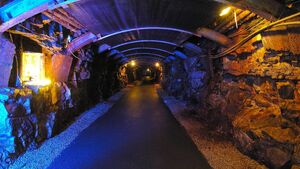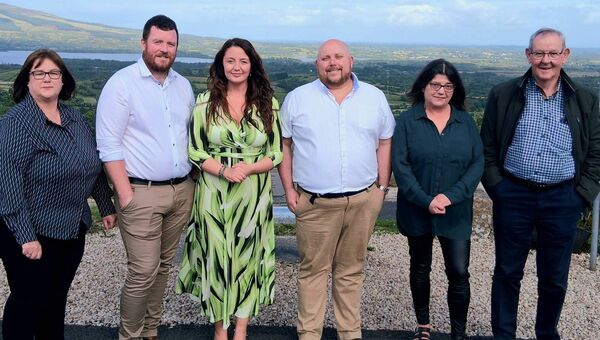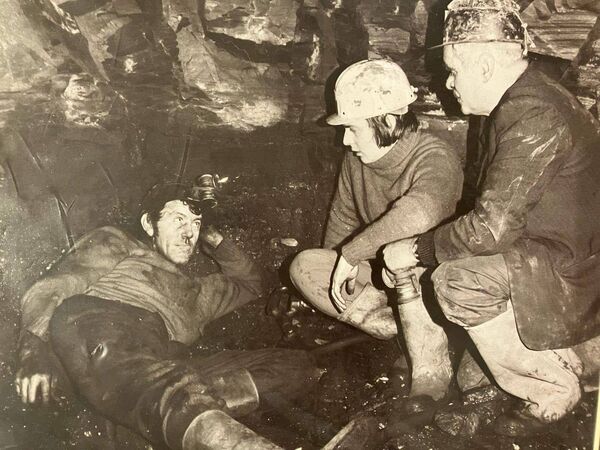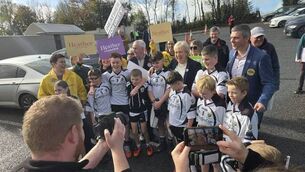A phoenix rising from the coal ashes – the Arigna Mining Experience

Arigna Mining Experience.
With the closure of the Arigna mines 35 years ago and the loss of hundreds of jobs, the ensuing impact on the local economy and a high unemployment rate meant that the future was looking very bleak for the area.
However, the resilience of the people shone though and within 13 years the Arigna Mining Experience was established.
From the very first seeds of an idea, this project has grown into a major tourist attraction as it is Ireland’s only coal mining museum.
Many people played a major part in its development, but it is perhaps the late Fr Sean Tynan who will be remembered for his instrumental role.
Often compared to the late Monsignor James Horan in Knock, Fr Tynan was not a man to accept ‘no’ for an answer and his objective and role in establishing this facility cannot be underestimated.
The then Kilronan parish priest, Fr Tynan was one of the key figures in establishing the Miners’ Way and the Historical Trail, which he mapped out himself. Indeed he could often be found walking the byroads at any time of the night and was one of the first to don a miner’s hat to find his way in the dark.

There are many stories to be told about the affable priest but behind it all he was determined to fight for his parish and its people.
The museum is a testament to him and others who fought hard to realise this dream.
Tens of thousands of people travel to Arigna each year to experience the rich heritage of the area, to look down on the valley and river, an area of true beauty, and realise that beneath that magnificence generations of men took on the brutal hard work of mining coal. Some of those very same miners now operate as tour guides.
These include Vincent McLoughlin, who was born and raised in the Arigna valley, just one mile from the colliery, and spent ten years working in the mines. He was 16 when he started as a clipsman, hooking hutches of coal onto the hauling system, and also worked as a drawer. His father and all of his brothers also worked underground. He remembers when he started work that it was nerve-wracking to walk into the mines not knowing what to expect. They did not have training. Days before they began, new workers would be paired with older, experienced workers and off they went.
Jimmy Nugent took a job in the mines because he wanted to save money to get to London. He was young when he started, only 15, and was the first and only miner in his family. He started off pushing the hutches across the yard before he worked as a drawer. He was able to buy a Honda 50 after working in Arigna for just three weeks—the pay was fairly good when he started in 1975.

Gerard Cullen, originally from Geevagh, County Sligo, worked underground in Arigna’s mines for ten years. He started during school breaks when he was about 15, first as a drawer and clipsman, and then a shoveller. On his first day on the job, Gerry got to Arigna on the back of a neighbour’s motorcycle. He entered the mines for the first time via an air shaft (a small opening in the ground that descended, via ladder, into the mines below). He admits he balked a bit the first time he looked down the shaft, thinking it was very narrow and very dark. As was the way of it, a fellow miner coming up the air shaft gave some solace: “Sonny, if I can fit, you can fit”. Gerry says he looked at the size of the man and thought “Bejeesus that must true”.
Michael Earley spent nine years working in Arigna. He left underground work behind him when the mines closed in 1990. On his first day on the job he hitched a ride to Lynch’s Pit from his home in Grouse Lodge, Drumkeeran (County Leitrim) on the same pit lorry his father took to work. Michael spent his first summer filling diesel lines and then left school at 15 to work full time as a drawer. Michael recalls an incident that occurred during his first week on the job: “I nearly killed the boss. A hutch took off on me and I wasn’t strong enough to hold it back. The boss was at the bottom of the track and yelled out ‘Michael, ya nearly killed me! Why didn’t you put in a snivel?’ All I could think to myself was ‘sure, what’s a snivel?’ No one had shown me how to slow down a cart!”
Maurice Cullen has been there from the very beginning as they created the mining experience, from the tunnelling to the building, bringing his wealth of knowledge to the project. He has continued to work at the site despite retiring in 2016 and is the true essence of that resilience which has been shown by the local community.






